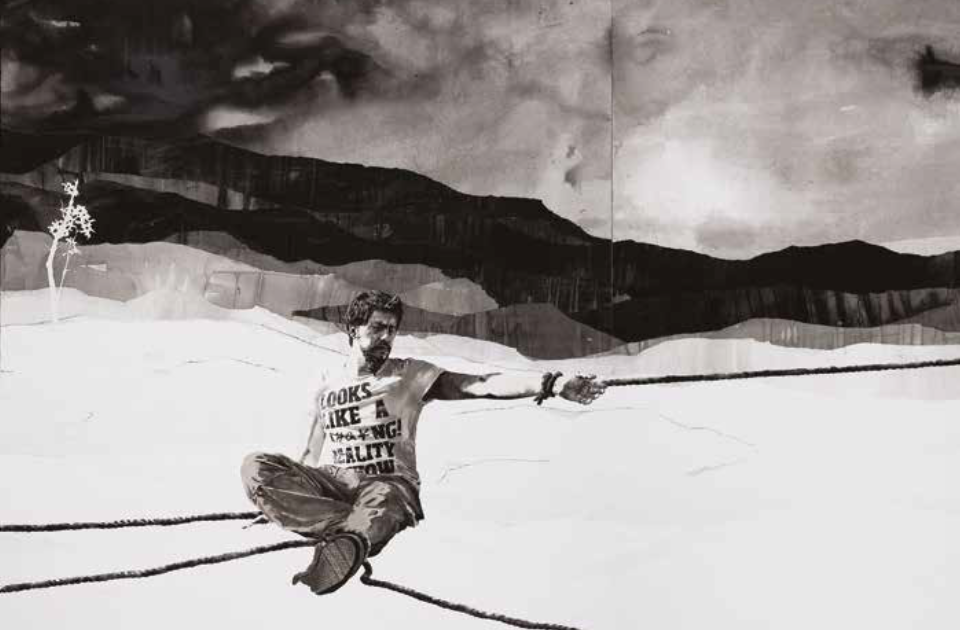[English text below]
A fuggire il nichilismo è del resto l’inesorabile protagonismo dell’artista. Come la costola da Adamo, Sant’Ippolito (Autoritratto) è un dittico, realizzato a collage e acrilico, estrapolato da un lungo fregio dedicato ai martiri nel 2011. Le carni stanno per essere dilaniate dalle funi e l’immedesimazione è totale. Un autoritratto appunto. Non è un caso che quest’opera sia rimasta finora di proprietà dell’artista, che non ha ceduto alle lusinghe di diversi collezionisti che volevano dargli casa. Il motivo di tanta affezione non è, però, la sofferenza del martire Ippolito, ma la resistenza di Mastrovito. A ben guardarlo, infatti, più che farsi strappare, con queste funi, l’artista sembra avere la forza di attrarre a sé tutto ciò che lo circonda, certamente di tirare le fila della mostra e della sua necessità espressiva. Al centro c’è lui, nel bene e nel male il risparmio di sé non è contemplato, anche se questo processo di comprensione e inclusione del reale non è evidentemente privo di conseguenze.
St Hippolytus (self portrait)
Fleeing from nihilism is after all part of the unescapable protagonism of the artist. Like the rib of Adam, Sant’Ippolito (Autoritratto) is a diptych, produced as a collage with acrylics, taken from a long frieze dedicated to martyrs in 2011. His $esh is about to be torn apart by the ropes, and the sense of identification is all-enveloping. A self-portrait indeed. It is no coincidence that until now this work had remained the property of the artist, not giving in to the alluring comments of various collectors who longed to give it a home. The reason behind such affection is not however the suffering of the martyr Hippolytus, but Mastrovito’s resistance. In fact, on closer inspection, rather than being torn to pieces by these ropes, the artist seems to have the strength to attract towards himself everything that surrounds him, and certainly to pull the threads of the exhibition and of his expressive needs. At the center there’s him: in good and evil, saving himself is not contemplated, even though this process of the comprehension and inclusion of reality is clearly bereft of consequences.
